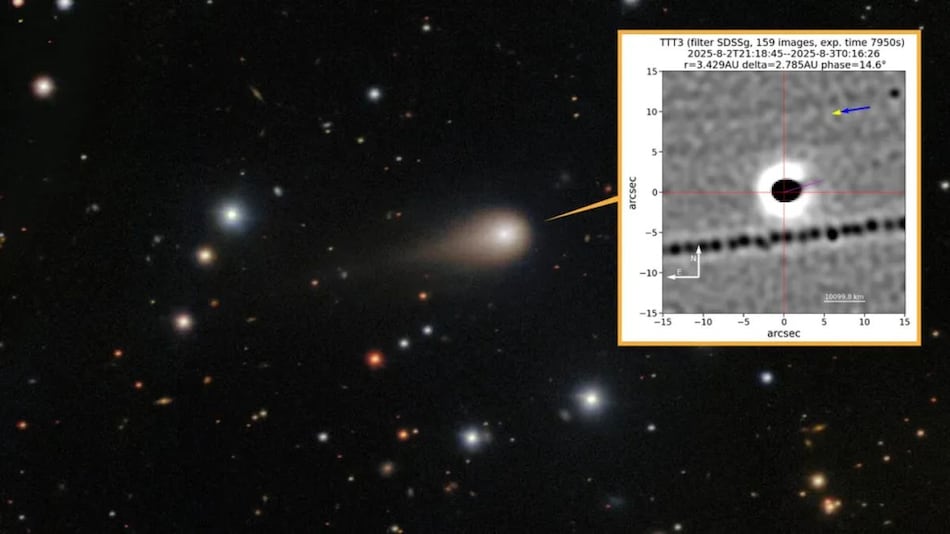New images reveal interstellar comet 3I/ATLAS blasting a massive jet toward the Sun.

Interstellar comet 3I/ATLAS captured ejecting a powerful jet of gas and dust sunward
Click Here to Add Gadgets360 As A Trusted Source

Newly captured images of the interstellar comet 3I/ATLAS show a striking jet of gas and dust shooting toward the Sun, confirming the object’s natural behaviour. Detected in late June and confirmed by NASA in July, 3I/ATLAS originates from a distant star system and is only the third interstellar object ever seen. Estimated to be between 5 and 11 kilometres wide, it is the largest such visitor yet discovered and possibly the oldest, dating back billions of years before the Sun’s formation.
New Telescope Images Capture Interstellar Comet 3I/ATLAS Blasting a 10,000-Kilometer Jet Toward the Sun
As per a Live Science report, the latest images were captured on August 2 by the two-metre Twin Telescope at Spain’s Teide Observatory in the Canary Islands. The composite picture, made of 159 individual exposures, displays a dark nucleus surrounded by a bright white coma and spewed material cloud up toward the sun in the appearance of a bright fan. Such jets are typical when sunlight heats up one side of a comet more than other parts, said Miquel Serra-Ricart, an astrophysicist at the Teide Observatory. This is causing gases to shoot out into space like geysers.
Comets release jets when frozen material turns into gas under solar heat, with weaker spots bursting and plumes of gas and dust. The jet’s fan-shaped appearance is a common pattern.
Comets have a unique appearance with a sunward jet and tail pointing away from the Sun, with a newly detected jet from 3I/ATLAS likely composed of carbon dioxide and dust.
3I/ATLAS makes its closest point to the Sun as it skirts Mars on 29 October. seeing how the comet’s nucleus, its tail, and the jet activity would evolve after the mid-November solar encounter predicted by astronomers.







